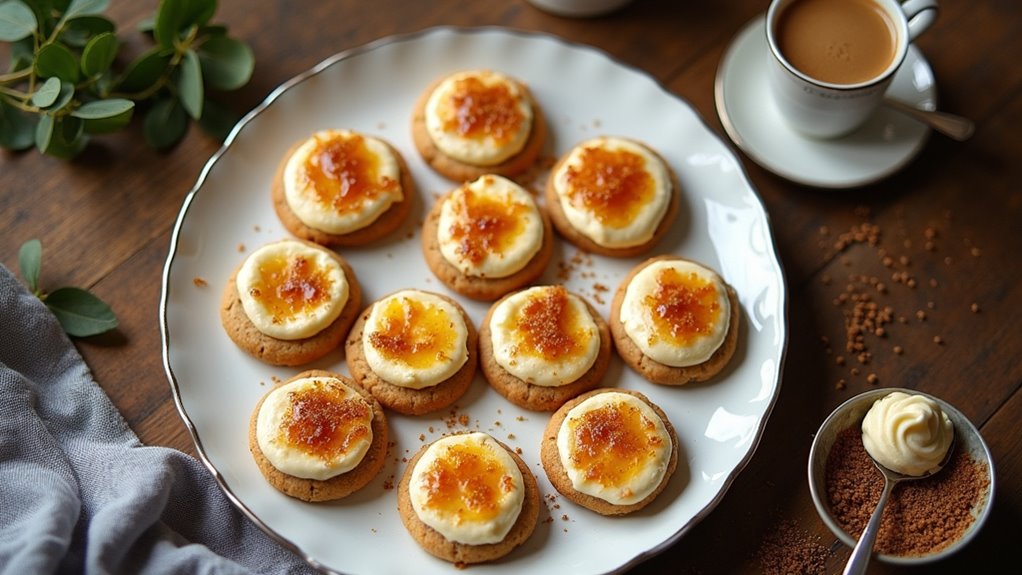I’ve got a soft spot for Biko, the Filipino sticky rice cake that never fails to bring back warm memories of family gatherings. There’s something truly magical about the way glutinous rice and coconut milk come together, isn’t there? I mean, it’s like a cozy hug in dessert form. But, trust me, it’s not all smooth sailing; I’ve burned more than one batch while getting distracted by the latest episode of my favorite show. So, let’s talk about how to keep things deliciously on track.
Why You’ll Love This Recipe
When it comes to comfort food, Biko, or Filipino sticky rice cake, holds a special place in my heart.
It’s not just a treat; it’s a warm hug on a plate. Imagine creamy, sweet coconut milk mingling with the chewy glutinous rice—heavenly, right?
You won’t believe how simple it’s to prepare. Just cook that rice until it’s soft, make some caramel with coconut milk and brown sugar, and fold them together.
Seriously, folding is an art, and trust me, you want to avoid mushiness.
And if you’ve got leftovers, a quick microwave will bring them back to life like magic.
Equipment List
Ready to whip up some Biko? You’ll need a few trusty pieces of equipment. First, grab a large pot for cooking your glutinous rice. You know, the one that can handle a good amount of liquid without bubbling over.
Then, a mixing bowl is essential for combining that sweet caramel with the rice. You’ll also want a spatula, preferably one that’s seen some action. It helps gently fold everything together without turning into mush.
Next, having a greased baking pan is a must; it keeps your delicious Biko from sticking. Finally, a sharp knife will be your best friend when it’s time to slice. Investing in premium kitchen appliances can elevate your cooking experience.
Nothing fancy here, just reliable tools to create a heartfelt treat. Ready to get started?
Our Ingredients
Getting ready to make some delicious Biko? You’re in for a sweet treat that’s perfect for sharing (or devouring all by yourself, no judgment here).
Just imagine that warm, sticky goodness, with the rich flavors of coconut and brown sugar melding beautifully with the soft glutinous rice. It’s a comforting dessert that’s been loved by many, and soon, you’ll be able to add it to your culinary repertoire.
So, let’s dive right into what you’ll need for this special dish!
Ingredients:
- Glutinous rice
- Coconut milk
- Water
- Brown sugar
- Salt
Before we jump into cooking, let’s chat a little about these ingredients.
Glutinous rice is the star of the show; it’s what gives Biko that signature chewy texture. Be sure to use glutinous rice, not regular rice because, trust me, nobody wants a sticky rice cake that’s more like a sad pile of mush.
Coconut milk adds creaminess and flavor, while brown sugar lends that deep, caramel-like sweetness. And hey, don’t forget the salt—just a pinch really enhances all those flavors!
If you’re feeling adventurous, you can even add toppings like toasted coconut flakes or a sprinkle of sesame seeds once it’s done baking. It’s all about making your Biko just the way you like it.
Step-by-Step Instructions

Making Biko, or Filipino Sticky Rice Cake, isn’t just a cooking task; it’s a chance to create a delightful treat that brings warmth to your home. Once you immerse yourself in the process, you’ll find it’s surprisingly simple and totally satisfying. Ready to impress your friends and family? Let’s get started with these easy steps!
1. Cook the Glutinous Rice**: Begin by rinsing** 2 cups of glutinous rice under cold water until the water runs clear. This removes excess starch and helps achieve that perfect sticky texture.
Then, combine the washed rice with 1 cup of coconut milk and 1 cup of water in a large pot. Bring it to a boil over medium heat. Once it bubbles, reduce the heat to low, cover, and simmer for about 20-25 minutes, or until the rice is soft and fully cooked.
(A little tip: if the rice seems undercooked, add a splash of water and keep cooking, but don’t go overboard.)
2. Make the Caramel**: While the rice is cooking, it’s caramel time. In a separate saucepan, combine 1 cup of coconut milk and 1 cup of brown sugar**.
Bring this mixture to a gentle boil over medium heat, stirring constantly. You want to keep stirring until it thickens up, which should take about 10-15 minutes. Watch it closely; you don’t want to burn it—unless you enjoy the smell of burnt sugar, in which case, good luck with that.
3. Combine Rice and Caramel: Once the rice is properly cooked and your caramel has thickened to a luscious consistency, gently fold the cooked rice into the caramel mixture.
Use a spatula to incorporate everything without mashing the rice. You want the rice to retain its sticky, chewy texture while soaking up that heavenly caramel. (It’ll be messy, but that’s just part of the fun.)
4. Prepare for Baking: Preheat your oven to 350°F (175°C). Grease a baking pan (about 9×13 inches should do the trick) with a little coconut oil or whatever you prefer to prevent sticking.
Gently pour the rice-caramel mixture into the greased pan, spreading it out evenly.
5. Top with Remaining Caramel: If you have some caramel left from cooking (and trust me, you should), drizzle it on top of the rice mixture for an extra touch of sweetness. It just makes the whole thing look even more inviting.
6. Bake: Pop the pan in your preheated oven and Bake for about 30-35 minutes.
You’re looking for a lovely golden brown on top. The aroma wafting through your kitchen will make you feel like a kitchen wizard, and trust me, it feels good.
7. Cool and Slice: After baking, let your Biko cool for a bit in the pan—maybe about 10-15 minutes.
Once it’s cooled, slice it into squares or rectangles, whichever floats your boat. It’s still steaming and oh-so-sticky, so don’t rush this part; let it set for a moment.
And voilà! You have homemade Biko to share (or not). You may want to keep it all for yourself, but I’ll leave that dilemma up to you. Remember that having premium baking equipment can significantly enhance your baking experience and ensure great results!
Tips & Variations
Although you might think there’s just one way to enjoy Biko, there are plenty of fun ways to switch things up and make this sticky rice cake your own.
For a twist, try adding a scoop of grated cheese on top before baking. It sounds wild, but the salty-sweet combo is delightful.
Feeling adventurous? Toss in some ube or mango for a splash of color and flavor.
I remember the first time I added coconut flakes; it felt like a little tropical vacation in my kitchen.
And if your rice seems undercooked, no worries—just add a bit of water and let it steam until soft.
Trust me, we’ve all had those “oops” moments in the kitchen.
How to Serve?
Serving Biko is where the fun really begins. Once it’s cooled and cut into those lovely squares, I like to arrange them on a big platter. Trust me, your guests won’t be able to resist the sight of that shiny caramel topping.
I often dollop a little bit more of that reserved caramel on top for good measure—why not go all out?
You can serve Biko at room temperature or slightly warm; it’s versatile like that. I remember one time, I accidentally burned my fingers while trying to sneak a piece before dinner—definitely not my proudest moment.
To make it extra special, pair it with hot coffee or your favorite sweet tea. It’s a real crowd-pleaser!
Storage & Reheating Guide
Storing Biko properly means you can enjoy those delicious sticky squares days after whipping them up, which is a total win.
Just let it cool completely, then wrap it tightly in plastic wrap and pop it in the fridge. It’ll last about a week, but trust me, it’s usually gone long before then.
When it’s time to enjoy those leftovers, I usually microwave a slice for about 30 seconds. It’s nice and soft again.
If you want to be fancy, steaming is great too. Just don’t overdo it or you’ll end up with mush, and no one wants that.
Honestly, I’ve had a few mushy disasters before, but hey, we live and learn, right? Having professional baking equipment can make the process smoother and help avoid those mishaps.
Enjoy your Biko!
Final Thoughts
When I think about Biko, that sweet, sticky rice cake that brings back so many warm memories, I can’t help but smile.
Making Biko isn’t just about the steps; it’s about the moments it creates. You know what I mean, right? That first bite – that perfect combination of sweetness and chewiness – takes me straight back to family gatherings.
Sure, I’ve had my many mishaps, like almost burning the caramel, but hey, that’s part of the fun. The best part? Sharing it with loved ones.
Whether it’s a holiday or just a rainy afternoon, Biko is that comforting hug we all need.





